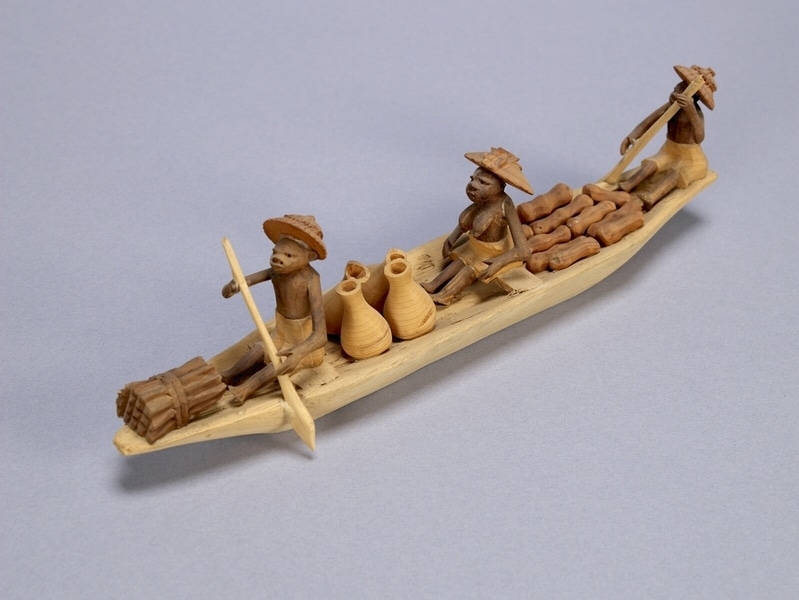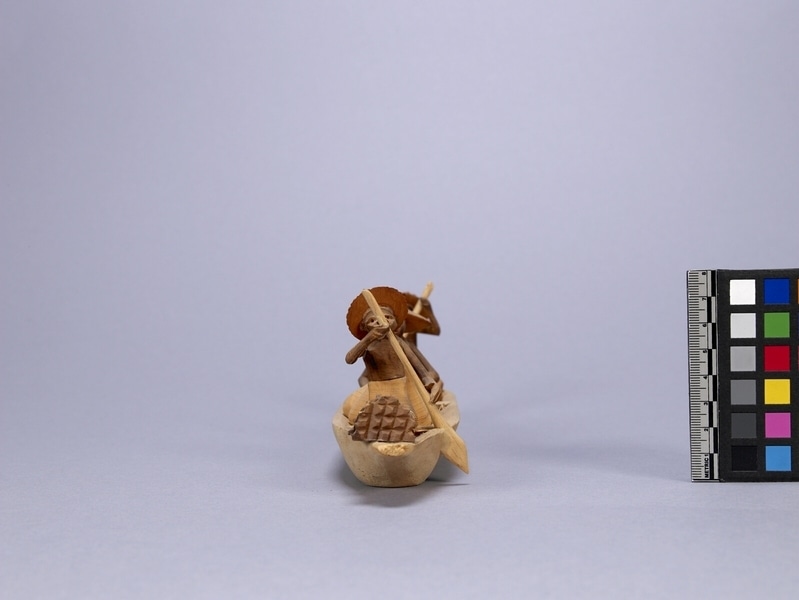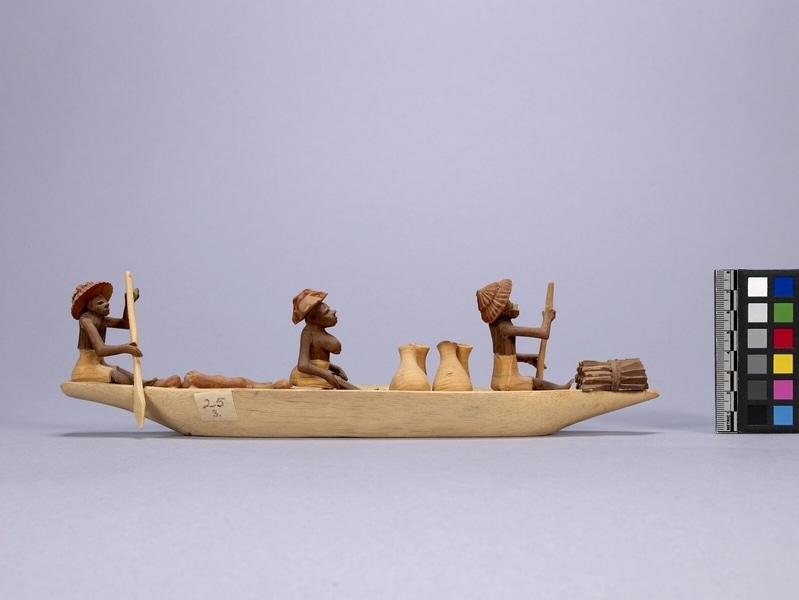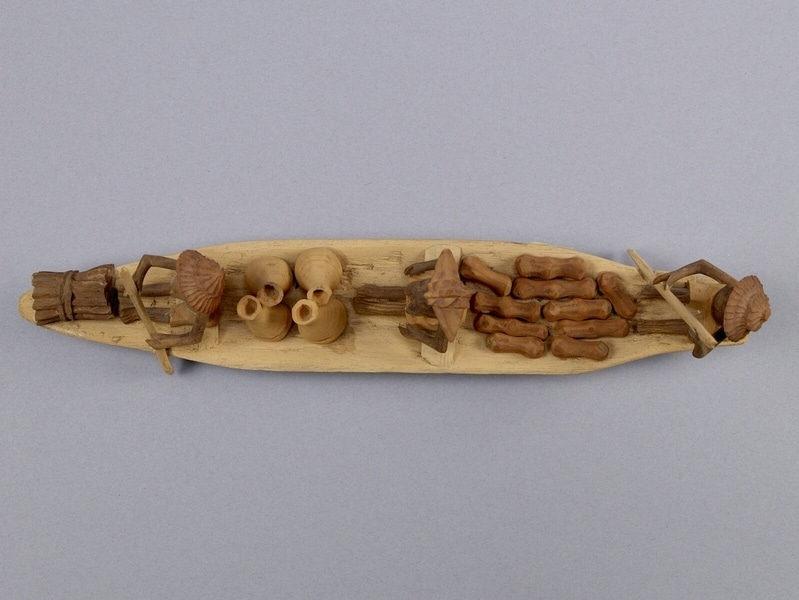Thorn Carving Item Number: Af362 from the MOA: University of British Columbia




Description
A small carving of a dug-out canoe with a tapered bow and a blunt stern while containing two seats in the front and in the middle. It holds three figures. One is a man sitting on the bow seat paddling while the second is a woman sitting on the seat in the middle, and a man sitting on stern paddling. Cargo consists of tied bundle of firewood on bow, four pots on the floor between the bow paddler and the woman, and ten log-shaped objects between the woman and the stern paddler. Central figure of woman is wearing a wide hat with pointed sides and a knee-length skirt. Paddlers are wearing brimmed hats and shorts. Wood bundle and figures are dark brown. Pots and garments are light yellow-brown. Hats and log-shaped objects are light red-brown. The canoe and paddles are a very light brown.
History Of Use
Thorn carvings are miniatures depicting scenes from Nigerian life. This type of carving began circa 1930. Thorns vary in size. They can be as large as 12.7 cm. long and 9.6 cm. wide. They are comparatively soft and easily carved. The light yellow-brown thorn and the dark brown thorn come from the Ata tree; the light red-brown thorn comes from Egun trees. The parts are glued together with viscous paste made from rice cooked with water. They are carved by men.
Cultural Context
craft; tourist art
Item History
- Made in Nigeria before 1972
- Collected during 1972
- Owned by Andrew Stewart and Jessie Stewart before February 8, 1980
- Received from Andrew Stewart (Donor) and Jessie Stewart (Donor) on February 8, 1980
What
- Name
- Thorn Carving
- Identification Number
- Af362
- Type of Item
- carving
- Material
- atum thorn, rice adhesive, wood and egun thorn
- Manufacturing Technique
- carved and glued
- Overall
- height 8.5 cm, width 30.7 cm, depth 6.5 cm
Who
- Culture
- Yoruba
- Previous Owner
- Andrew Stewart and Jessie Stewart
- Received from
- Andrew Stewart (Donor) and Jessie Stewart (Donor)
Where
- Holding Institution
- MOA: University of British Columbia
- Made in
- Nigeria
When
- Creation Date
- before 1972
- Collection Date
- during 1972
- Ownership Date
- before February 8, 1980
- Acquisition Date
- on February 8, 1980
Other
- Item Classes
- carvings & sculpture
- Condition
- good
- Accession Number
- 0590/0048